Preservation and accessibility of a large, multi-format collection
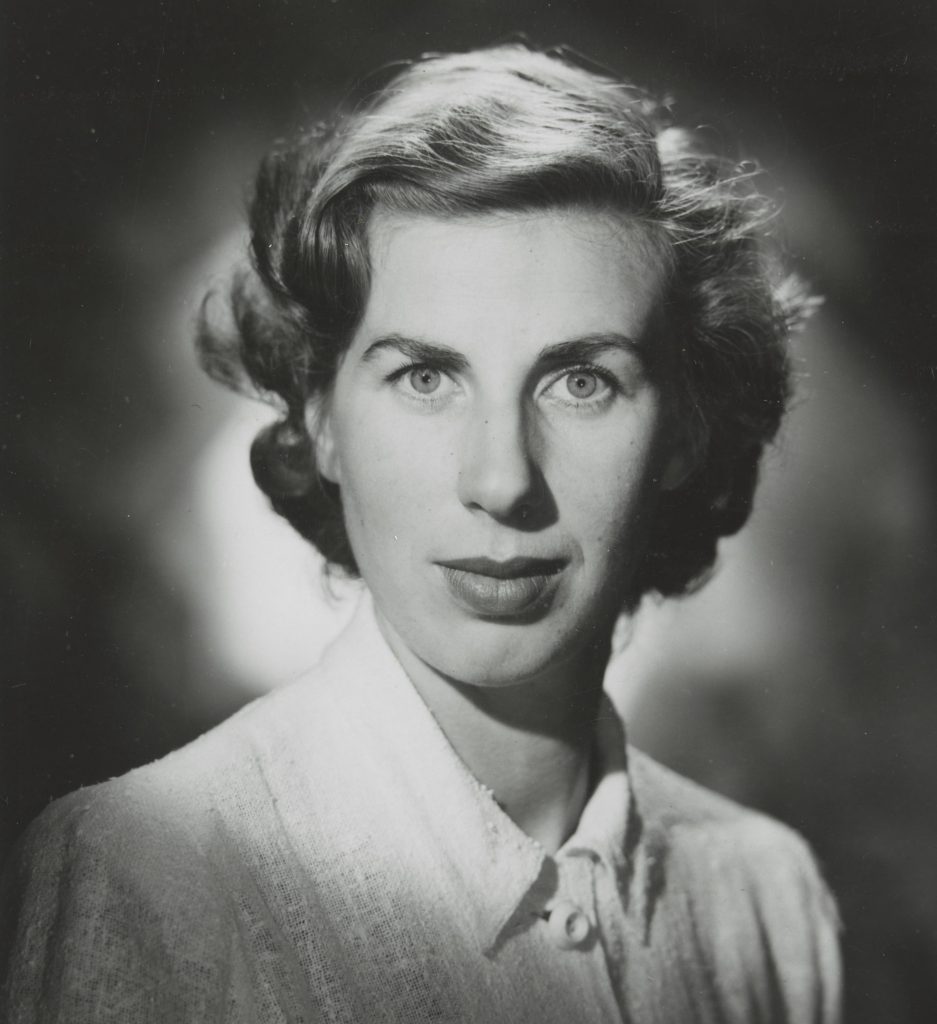
In December 2016, the Library received a large, multi-format Manuscript collection belonging to the late Marion Page (1918–2015). Its journey at the Library began with our Preservation department, which is responsible for providing safe, long-term protection for the collections we receive, to ensure that they will be accessible and discoverable for future generations.
Born in Melbourne at the end of the First World War, Marion Orme McPherson was the only child of Lady Sidney and Sir Clive McPherson. Her father was a prominent pastoralist, businessman and advisor to former Prime Minister, Sir Robert Menzies. The family home was in South Yarra and the McPhersons also owned two large properties on the edge of Lake Mulwala, Tarramia in Victoria and Boomanoomana Station in New South Wales.

(YMS 16147, Box 74)
Marion enjoyed her family’s connections and social privileges. One of her closest friends was Heather Menzies, daughter of Sir Robert Menzies, at whose wedding she attended as bridesmaid. Marion completed studies in Law and Commerce at the University of Melbourne during the 1930s and 1940s and became the first articled woman at Mallesons Solicitors in 1941. She served as an officer with the Women’s Auxiliary Australian Airforce (1944–1947), working initially as a driver and then a member of the legal service. In 1953, she was appointed as private secretary to Lady Violet Brooks who was the wife of Sir Dallas Brooks, Governor of Victoria (1949–1963), and Divisional Commander-in-Chief of the Australian Red Cross Victoria (1949–1963).

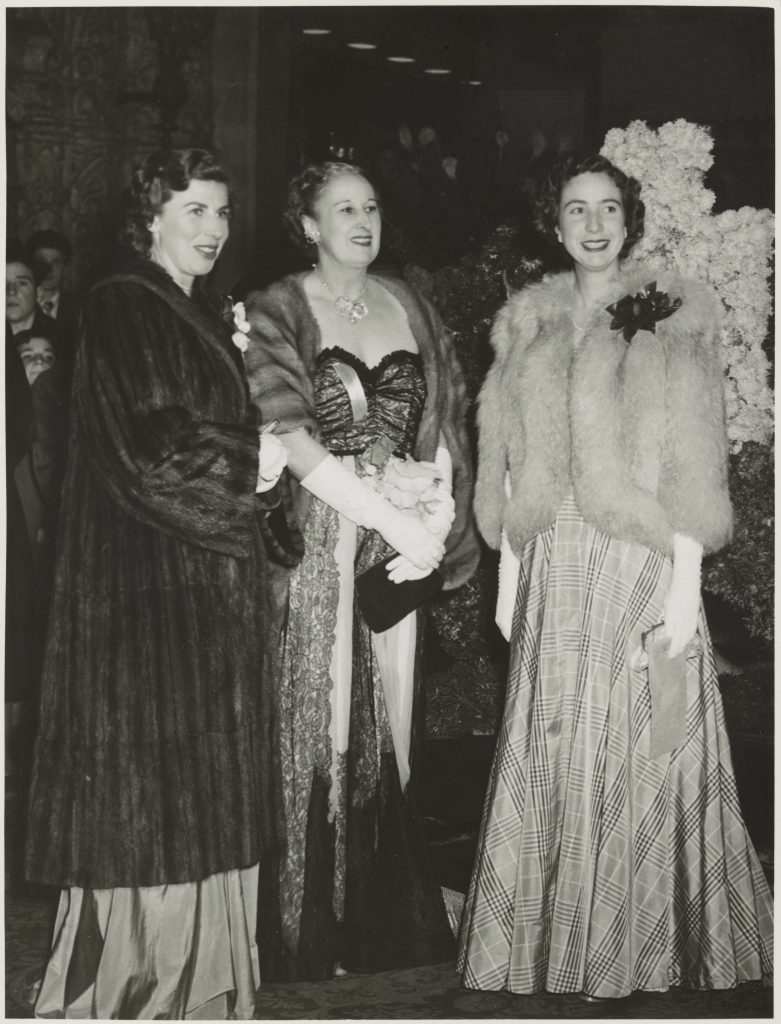
Marion outlived her two husbands – Dr Julian Smith (1903–1971) and Brian Page (1903–1989) – and had no children.
She passed away in 2015 at the age of 97 and her wish that State Library Victoria be entrusted with the care of her archive was fulfilled. In late 2016, the collection was received by the Library with a generous donation from Sir Clive McPherson’s Estate to rehouse, list, preserve and make the collection available.
The scale, poor condition and multi-format nature of the collection, coupled with a tight timeframe, presented a significant challenge for the Preservation Team. This was the genesis of a year-long project, culminating in the presentation of a paper at the Australian Institute for the Conservation of Cultural Materials’ Book, Paper and Photographic Materials Symposium in Melbourne in November 2018.
What’s in the collection?
The collection includes late 19th and early 20th century material belonging Marion’s parents and their respective families, including personal papers, correspondence, and photographs. There is material relating to Marion’s education at Toorak College and the University of Melbourne, her various careers, and the organisations she was involved with throughout her life. The archive also includes business and financial records belonging to both Marion and her father, many of which relate to the agricultural properties held by the family. Through her private papers and correspondence, diaries, photographs, film reels, and textiles and other realia, which span her early years and her two marriages, the wide-ranging material reflects Marion Page’s rich life, her achievements, and the social context in which she existed.
Arrival at the Library: assessment and sorting
An initial off-site assessment of the collection in mid-2016 revealed that storage conditions had not been kind. Large components were damp or wet, with some evidence of active mould growth. However, recognising the value and significance of the collection as a whole, the material was packed and transported to the Library’s Quarantine area for further assessment.
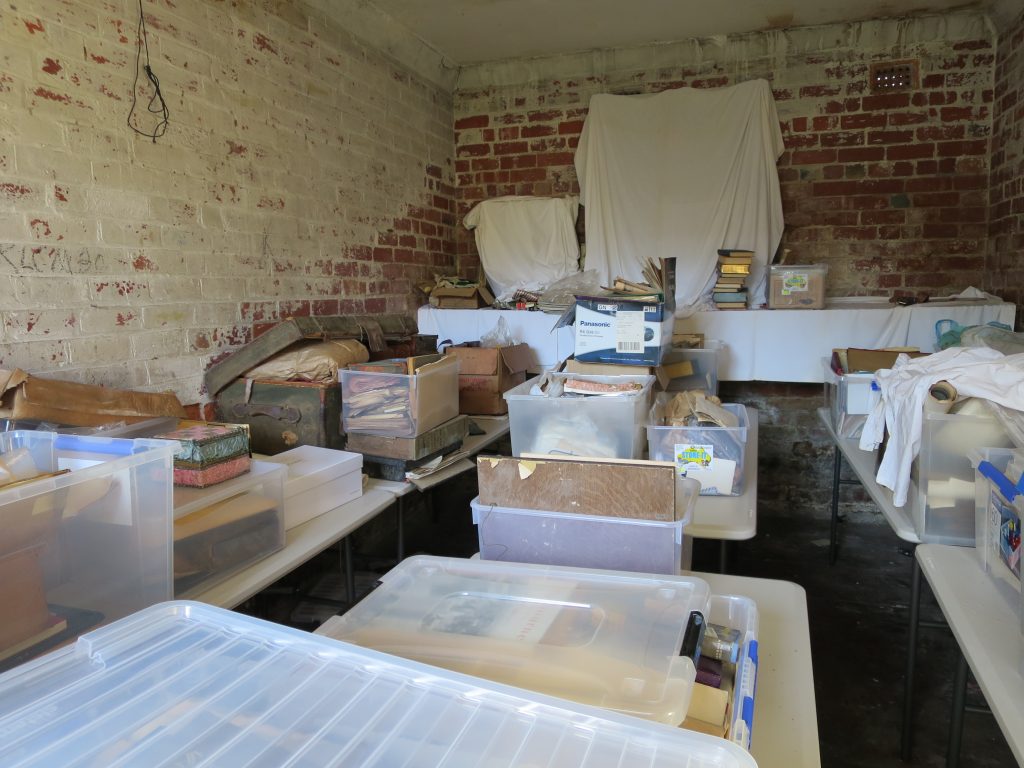


Undertaken in consultation with our Manuscripts collection manager, the assessment revealed that some material was unsalvageable and this was safely discarded. While much of the material was damp, it was in fair condition and could be treated effectively. Damp material was air-dried and stabilised, mould-affected material was dried and cleaned and the entire collection was temporarily boxed for storage until time and resources allowed for intensive preservation work to begin.

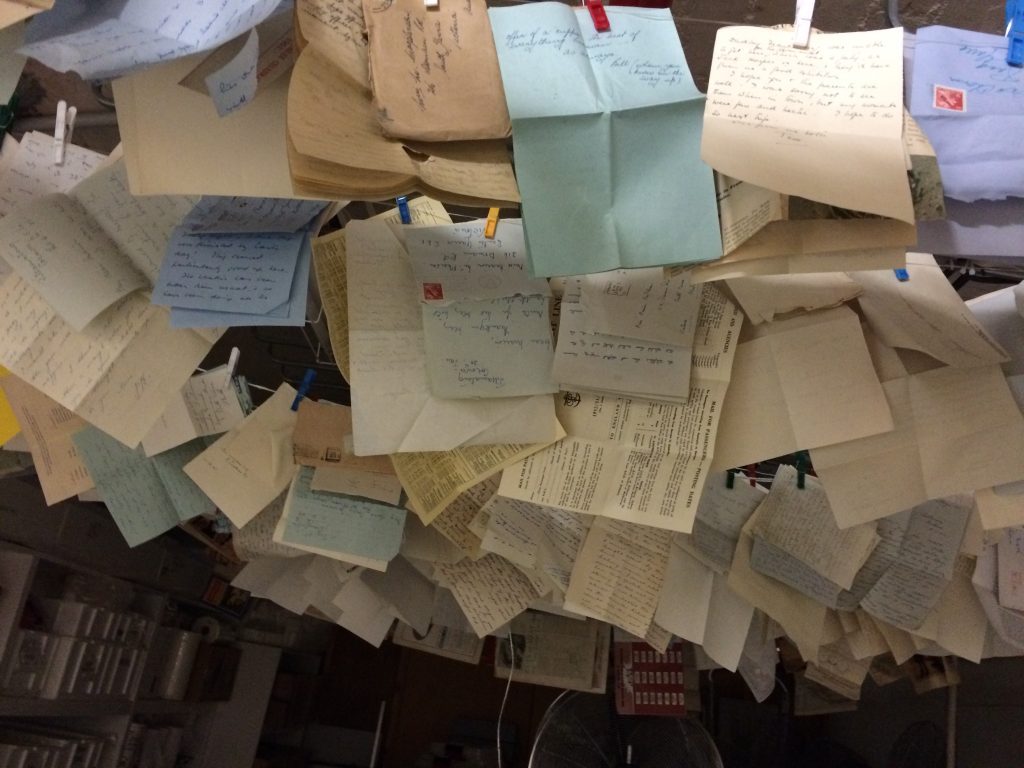
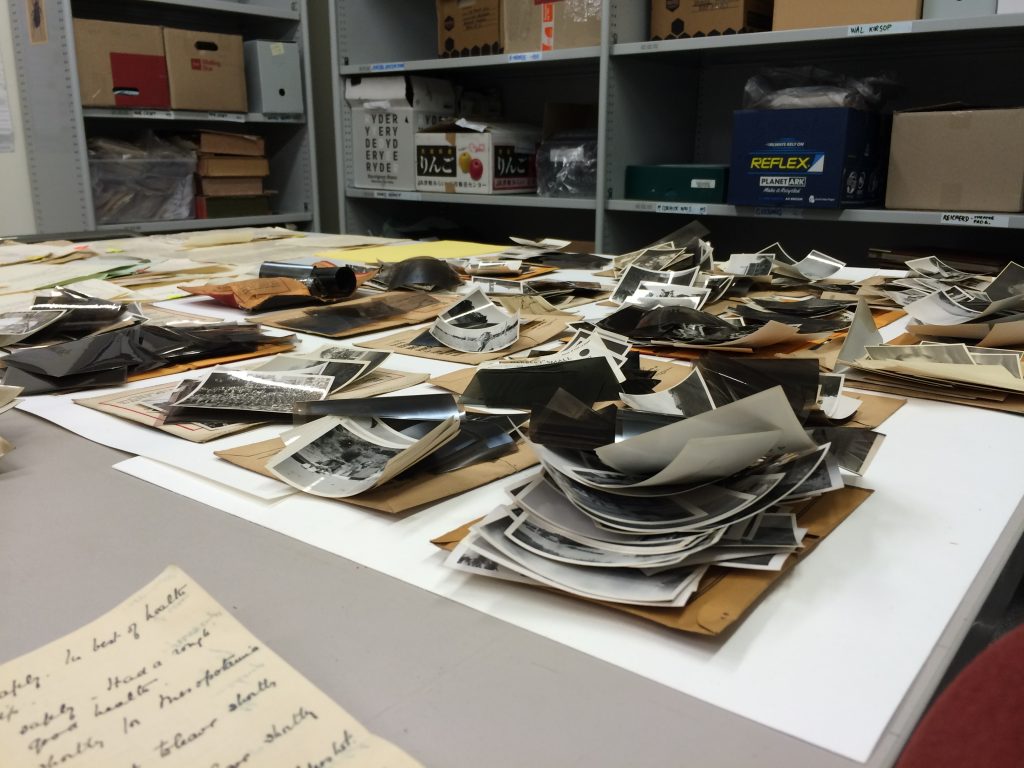
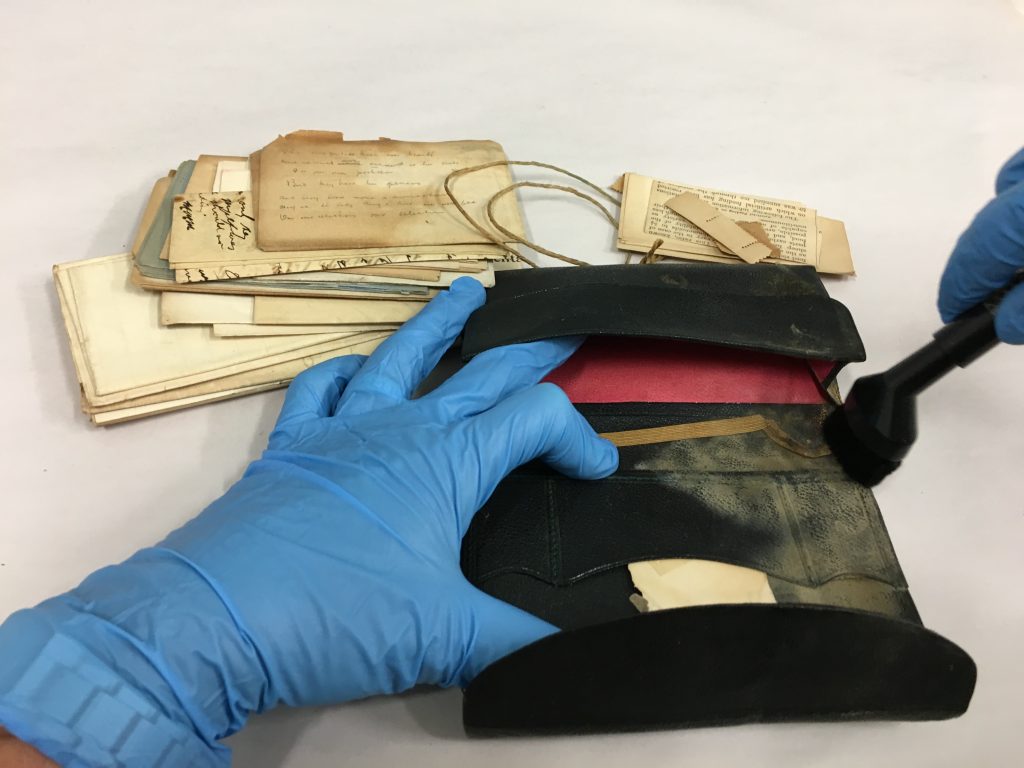
Beginnings
Preservation work began in earnest in early 2018. Overall, the collection was in a disordered state and required a significant amount of sorting prior to rehousing and listing. Generally, the original order of collections received by the Library is maintained, however the evident lack of structure within the Marion Page Archive demanded a pragmatic approach and the need to preserve and make the collection available was considered a priority.

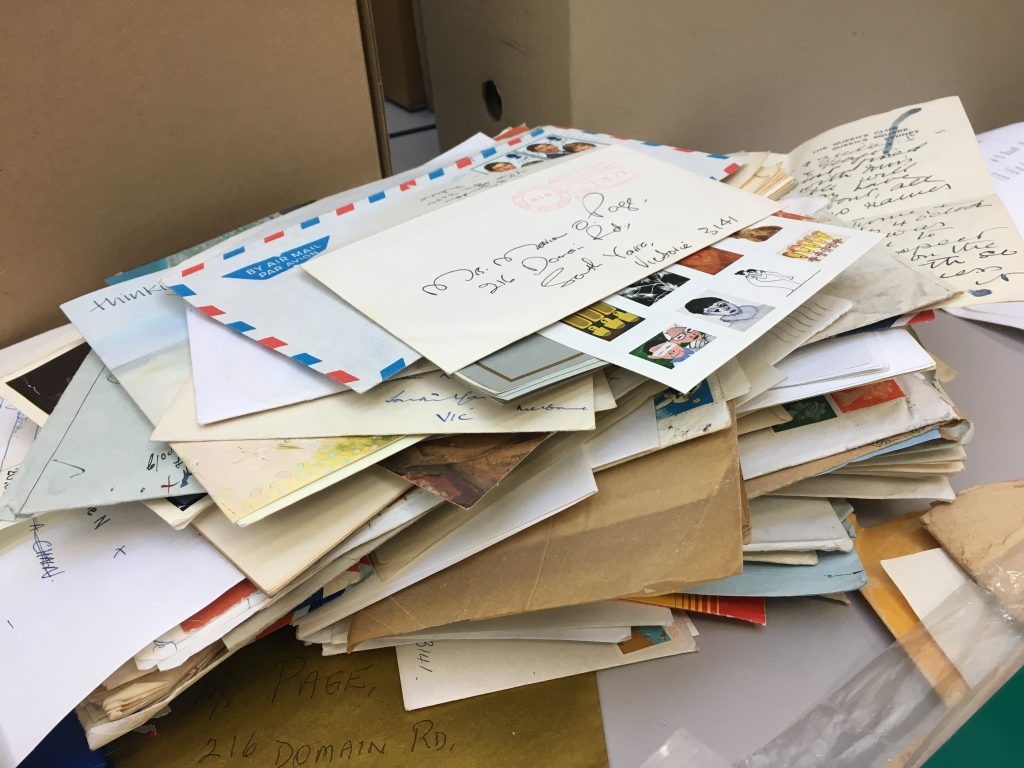
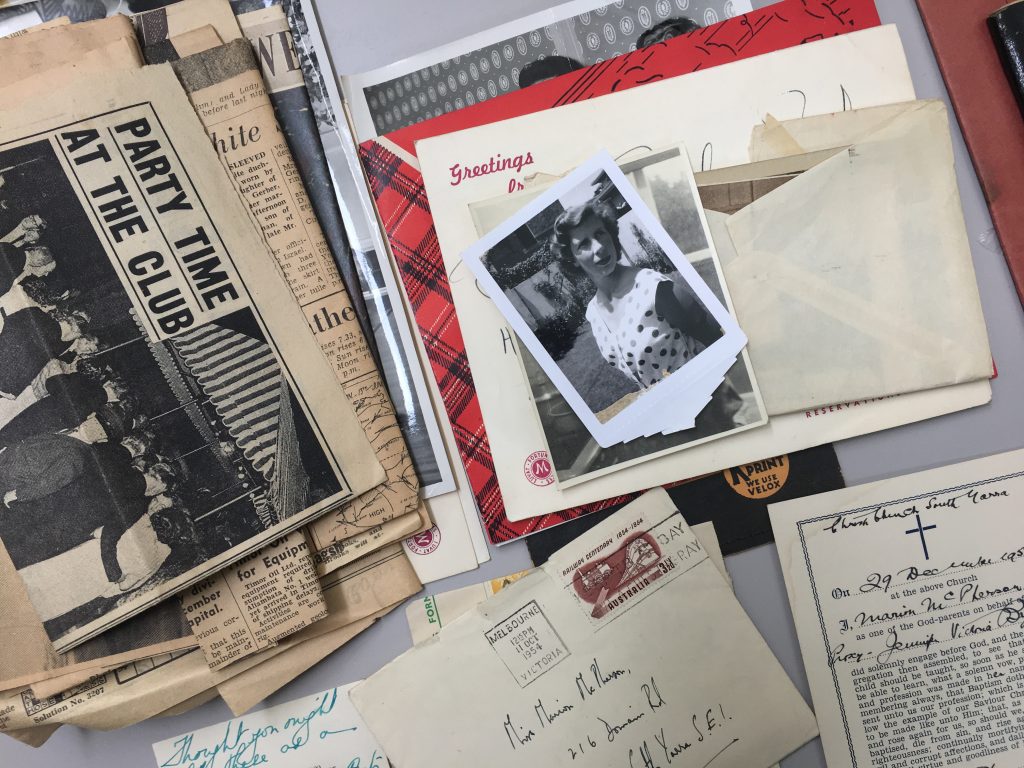
An initial high level sorting – ‘Clive’s papers, Marion’s papers, pretty things, unpretty things’ – evolved into a more detailed and granular process. This enabled the development of an appropriate range of subject categories to be used for series and sub-series.
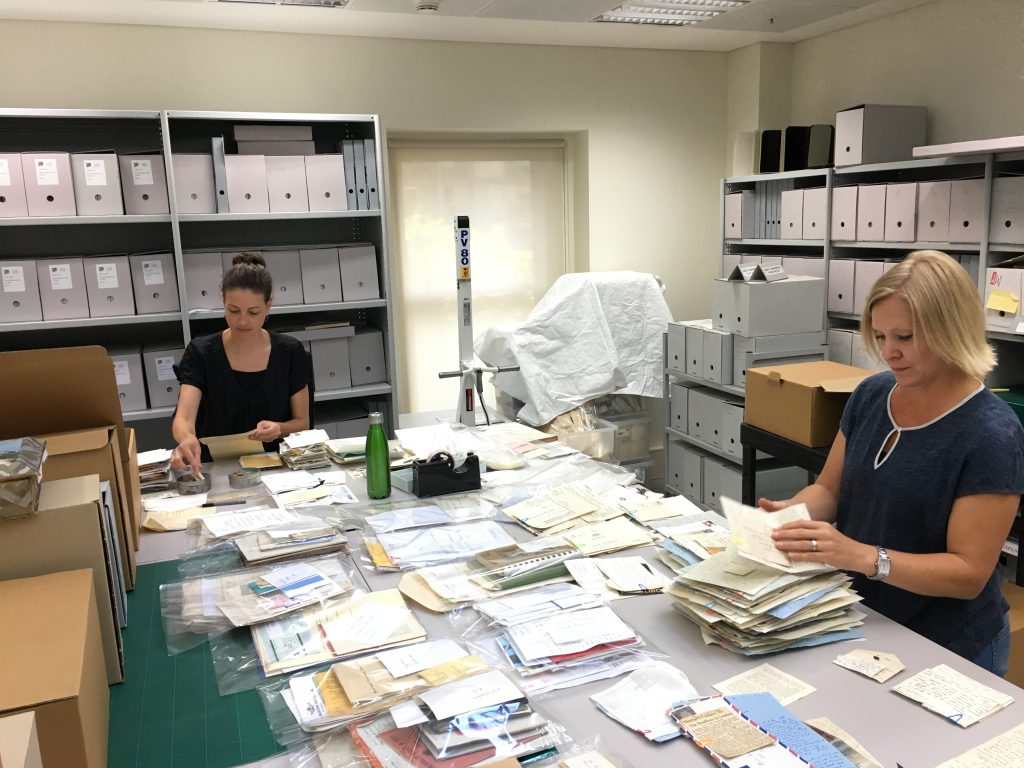
Preservation lists are used by Manuscripts staff for cataloguing purposes and the creation of comprehensive finding aids, which are linked to catalogue records to enhance discoverability of collections. There are general series common to most manuscript collections – for example: correspondence, personal papers, financial records – however, collection-specific sub-series can also emerge, which help to create structure in a collection and improve the ability of researchers to understand what is held.

Rehousing the collection
Preservation packaging standards are well-established for paper-based collections, however Manuscript collections often contain a variety of other formats, all of which require different packaging materials and storage solutions. This adds to the complexity of maintaining the integrity of a collection as a whole. Such was the case with the Marion Page Archive.

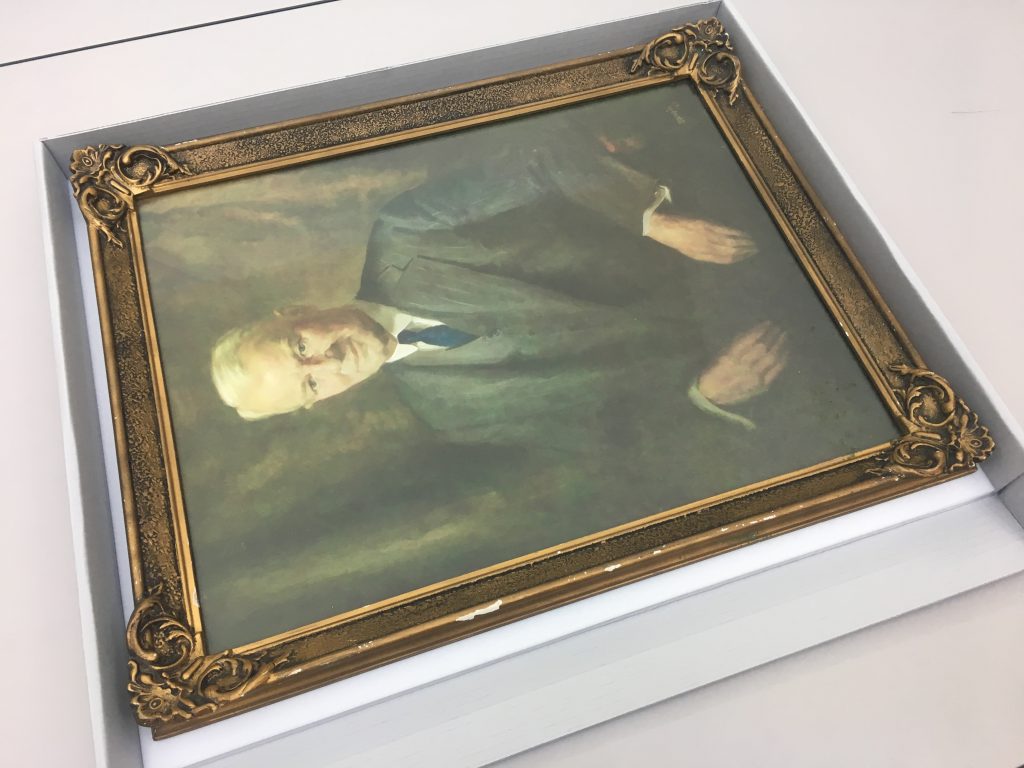
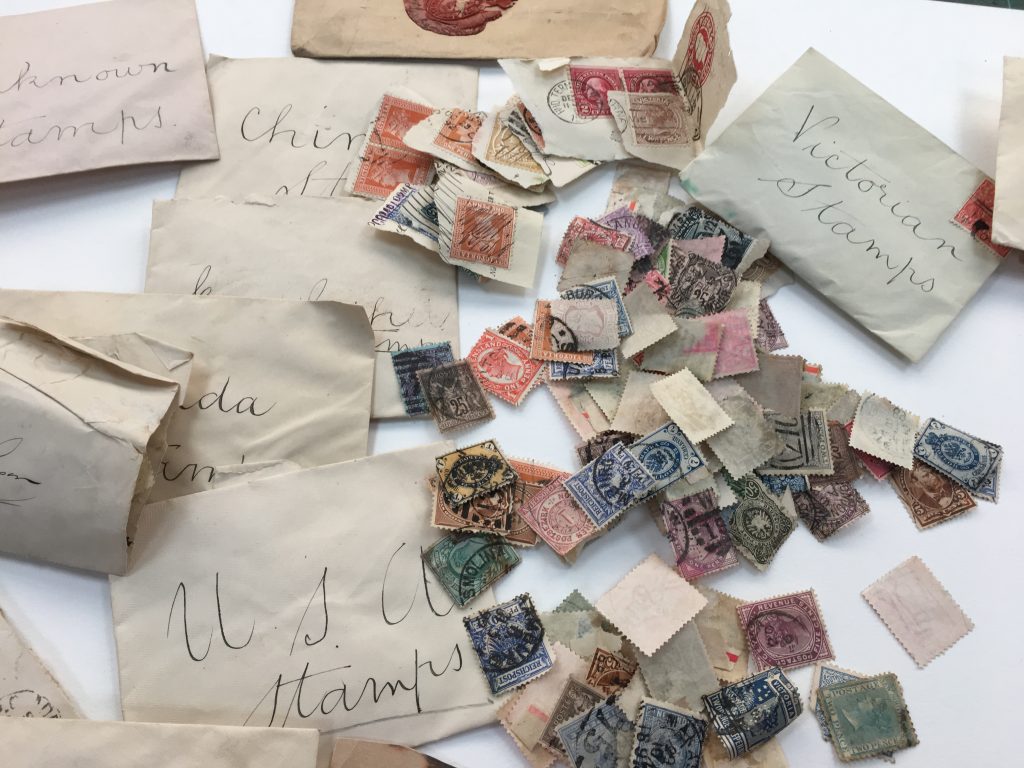
(YMS 16147, Box 86–87)
An initial priority was a box of 16mm cellulose acetate film reels showing early signs of degradation. These were rehoused into polypropylene enclosures and placed into cool storage to inhibit further deterioration. With original labels such as ‘Colombo’, ‘deck sports’, ‘Wimbledon’, ‘Menzies’ and ‘Princess Elizabeth’, we determined the films contained a sundry mix of holiday memories and special events. The funding received with the collection meant we were able to identify a small selection for external digitisation. We were excited at the prospect of capturing a glimpse of Marion in motion after becoming so closely acquainted with her through her mountains of letters, notes and photographs.
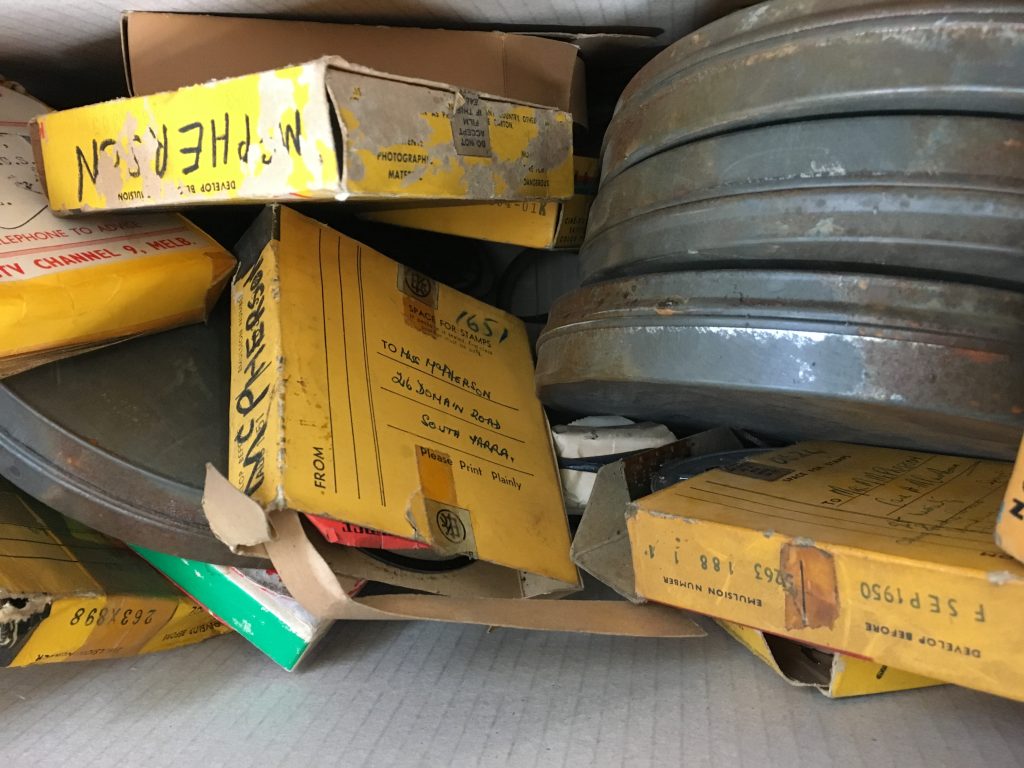
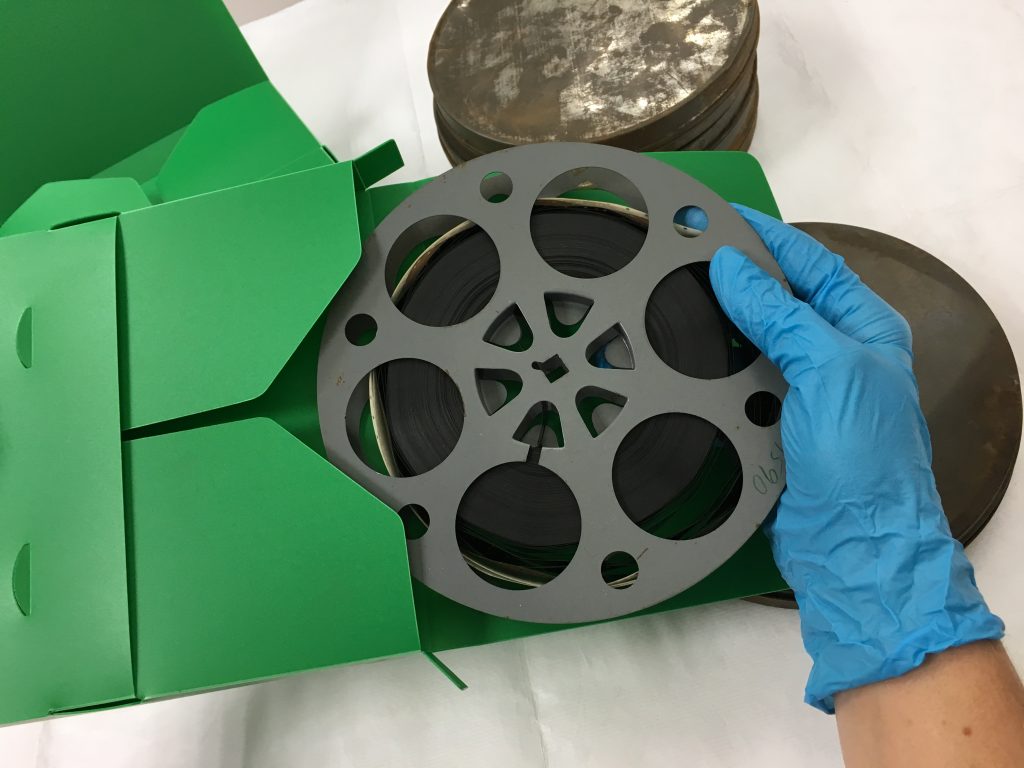
The collection also includes a large amount of photographic material spanning over 100 years, including prints, negatives, mounted slides and a few early cartes de visite and cabinet cards. Photographic material belonging to Marion’s mother offers a glimpse into Marion’s childhood and schooling during the 1920s and 1930s, right through to her service in the Women’s Auxiliary Australian Air Force in the 1940s.
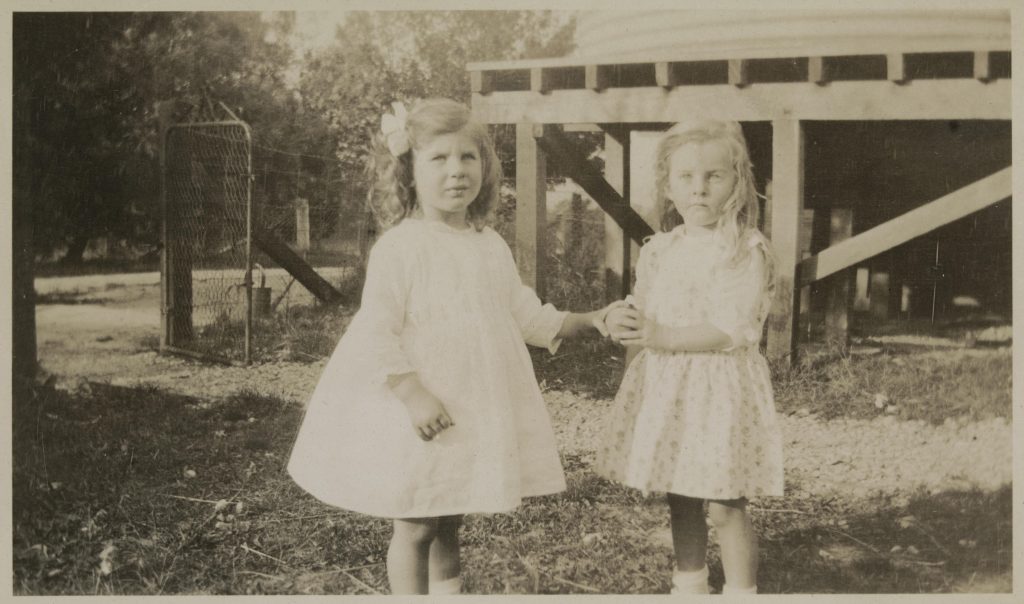
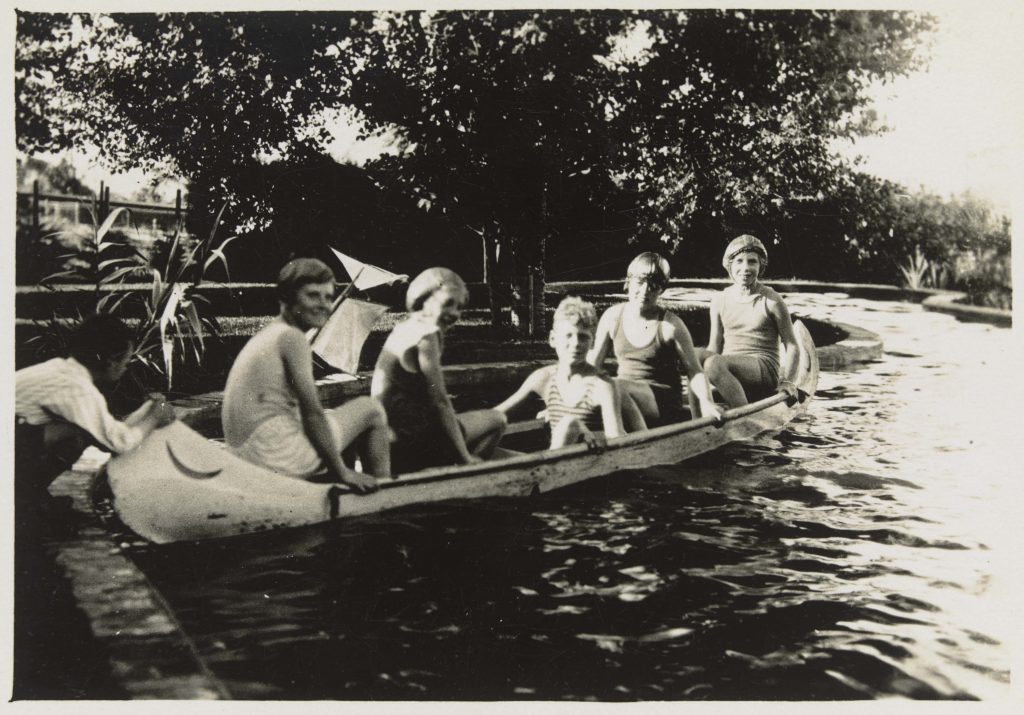


Marion was also a keen photographer, documenting social events, overseas holidays, her many animals and visits to the beloved family homestead, Tarramia. She was photographed by the media on numerous occasions, particularly between the 1930s and 1960s, at various significant social and cultural events in Melbourne and in the company of important and well-connected people.
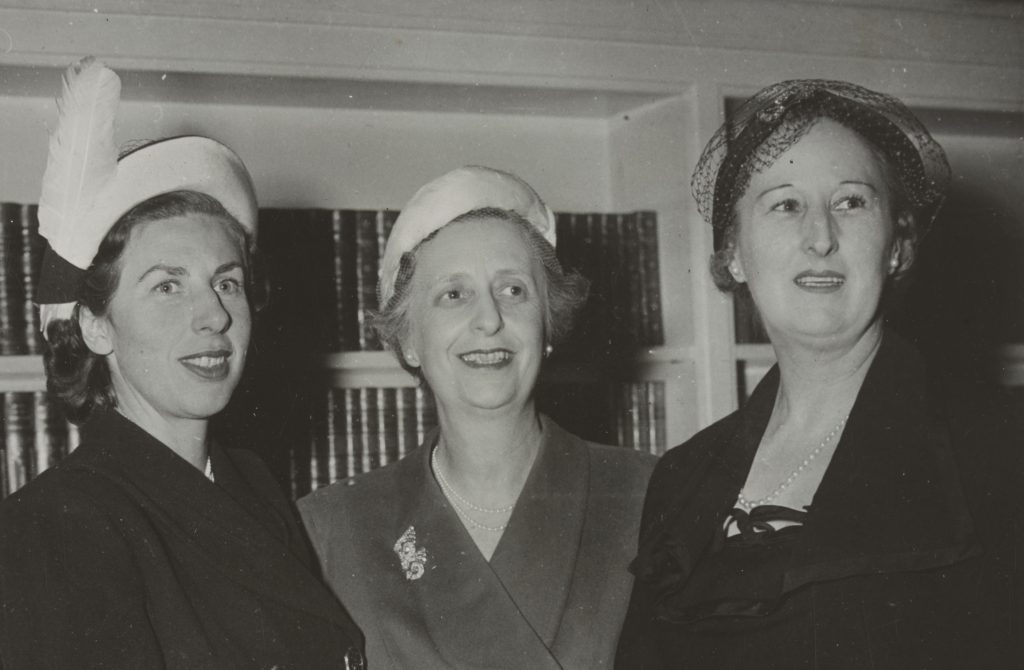

(YMS 16147, Box 80)
The collection also includes some wonderfully candid and personal portraits that evoke a sense of the private Marion.

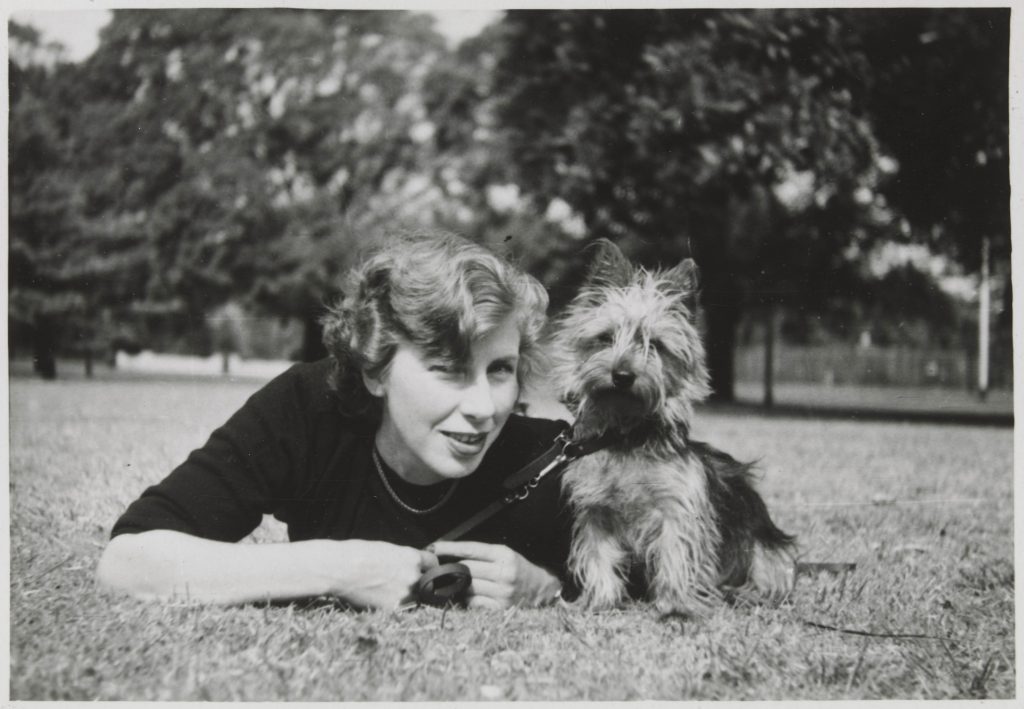
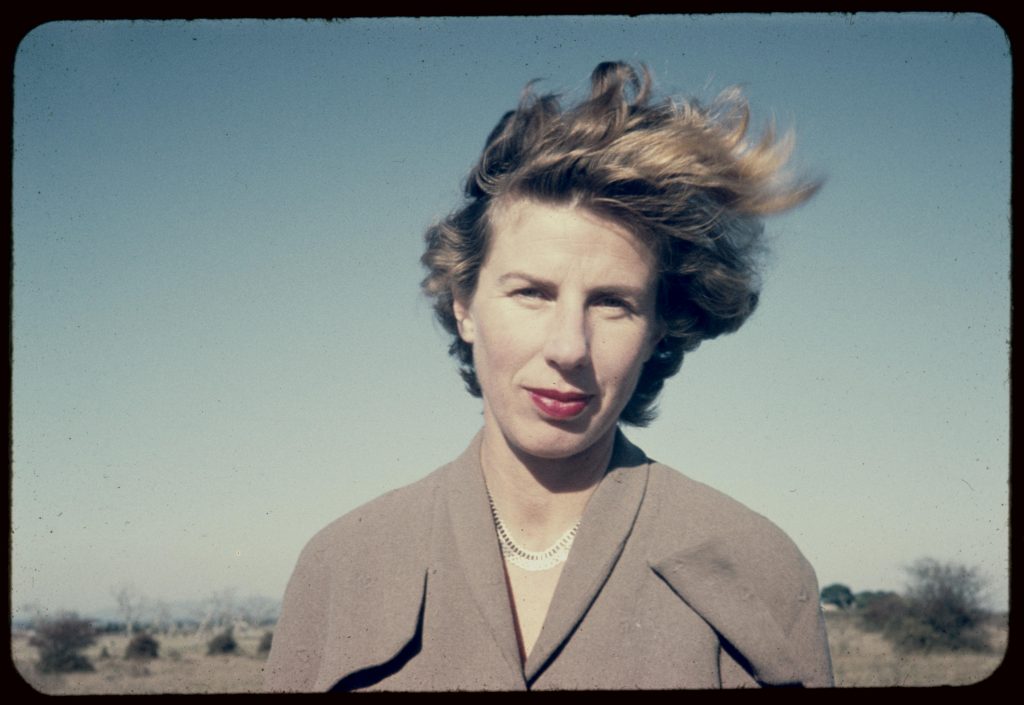
Preservation uses a range of materials for the long-term storage and protection of photographic material including polypropylene sleeves that fit snugly into standard albums and archival flat boxes for oversized items.


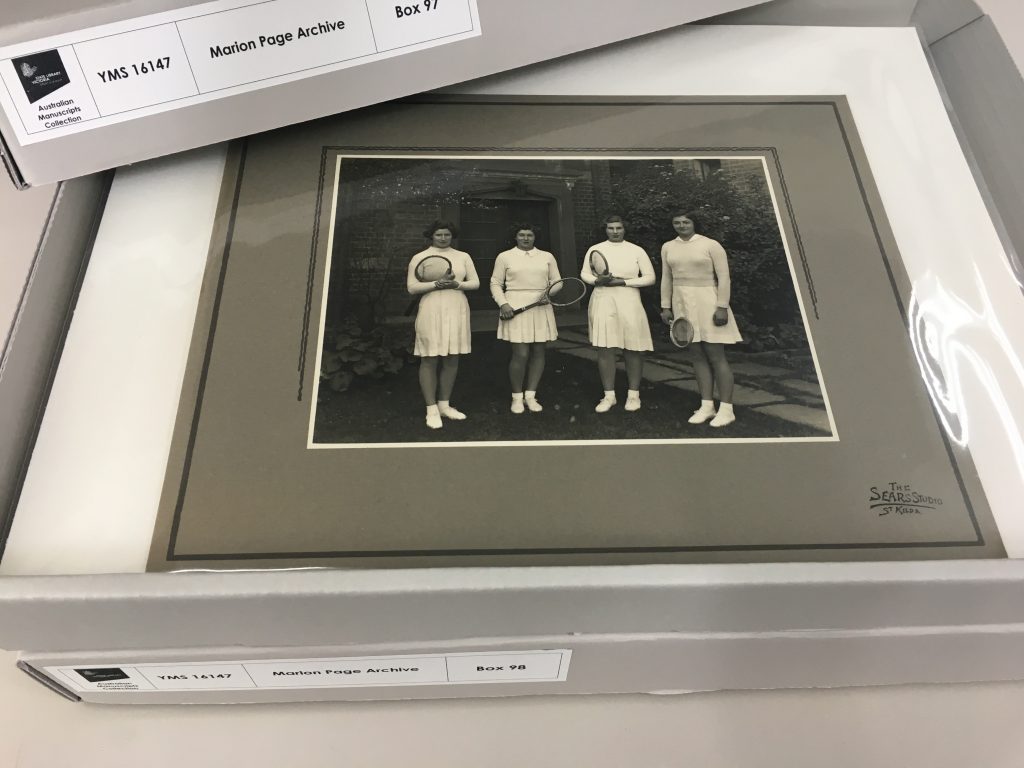
The bulk of the collection is paper-based material, including correspondence, diaries, financial and legal documents, university lecture notes, publications and ephemera. Papers were housed in standard archival folders and manuscript boxes, oversized items were placed in large flat boxes and various housing solutions were designed to support some of the smaller non-standard items. Ephemera boxes, designed to fit snugly inside standard manuscript boxes, provide added protection for small objects and allow related material to be housed together, with custom phase boxes also offering additional support and protection for fragile bound items.
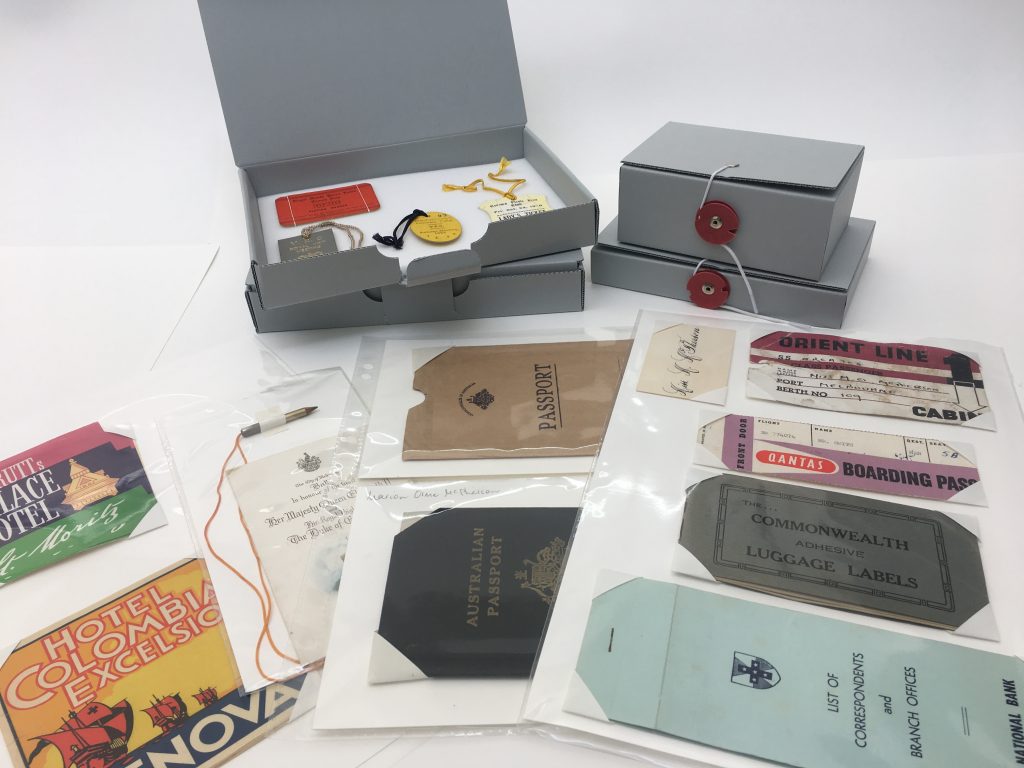
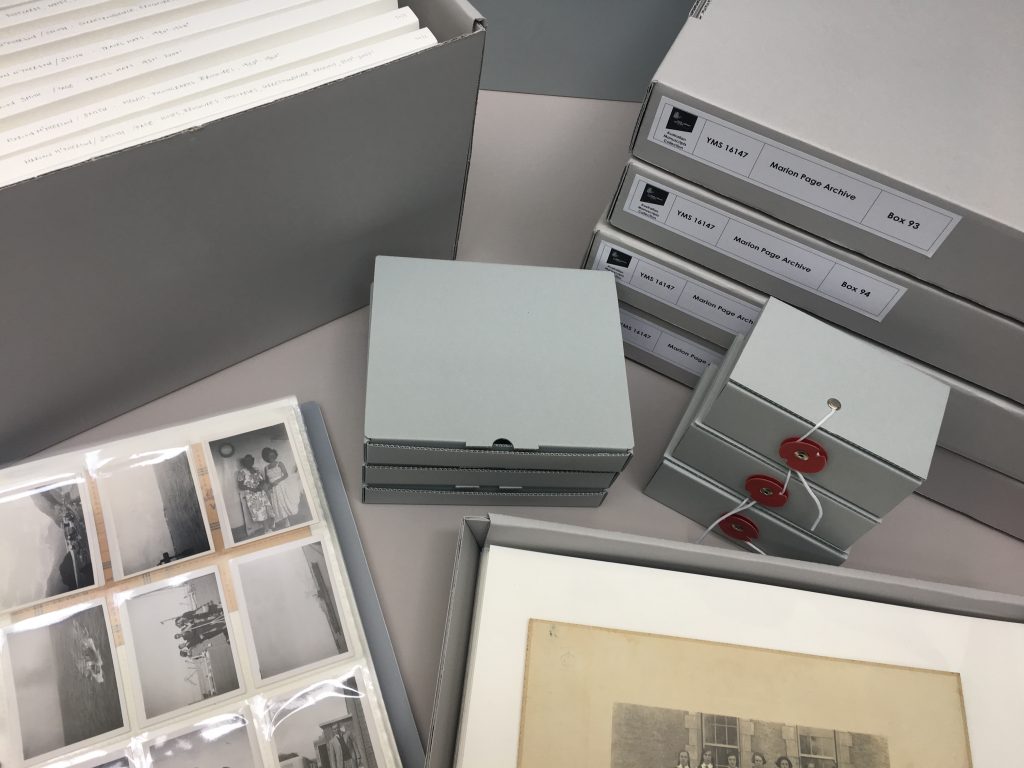
Custom boxes were designed for a range of objects and textiles, including Marion’s complete service uniform. Standard flat boxes were custom fitted for smaller items to be housed together, minimising the overall footprint of the collection.

As work progressed over the weeks and months, we were able to glean more and more about Marion’s interests and achievements. She attended Toorak College in Frankston where she was a Prefect, Games Secretary and goal-keeper for the hockey team.
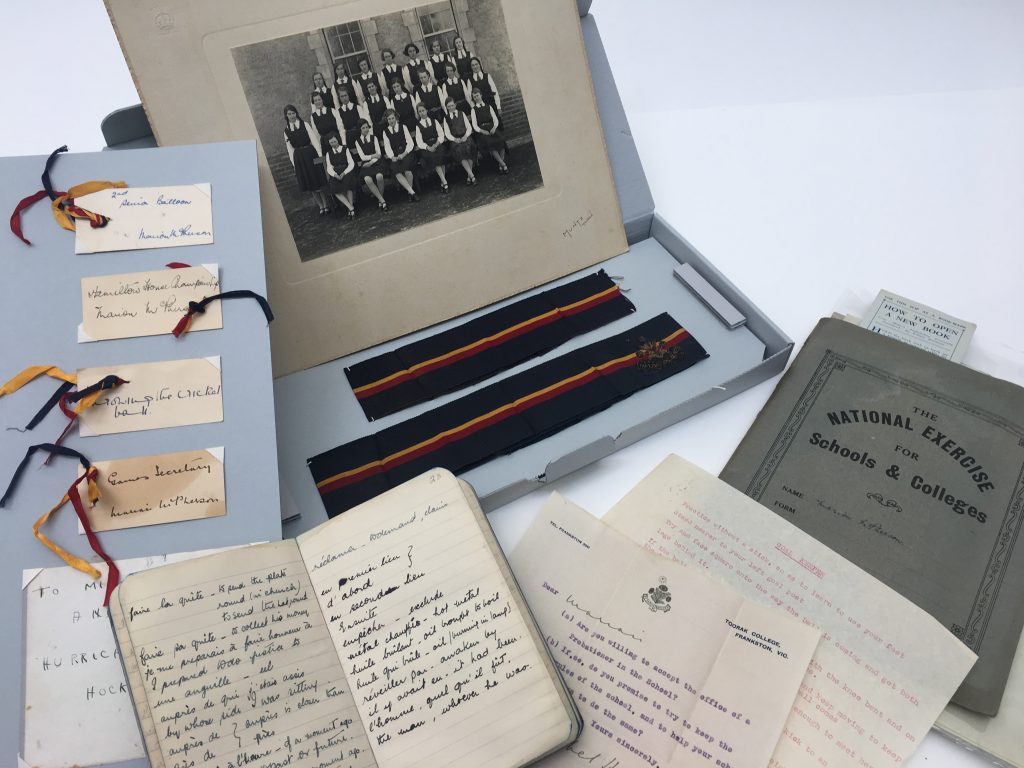
(YMS 16147, Box 22/3 and 61/1)
She achieved high results across the board at University, with the exception of Statistical Method. Lecture notes containing song lyrics, RSVPs and catering lists for parties suggest she was not unlike today’s students, distracted by the promise of social connections and friends. She loved to travel and she did so in style. She also liked to shop – at Myer Emporium like her father, and Georges on Collins was also a favourite.
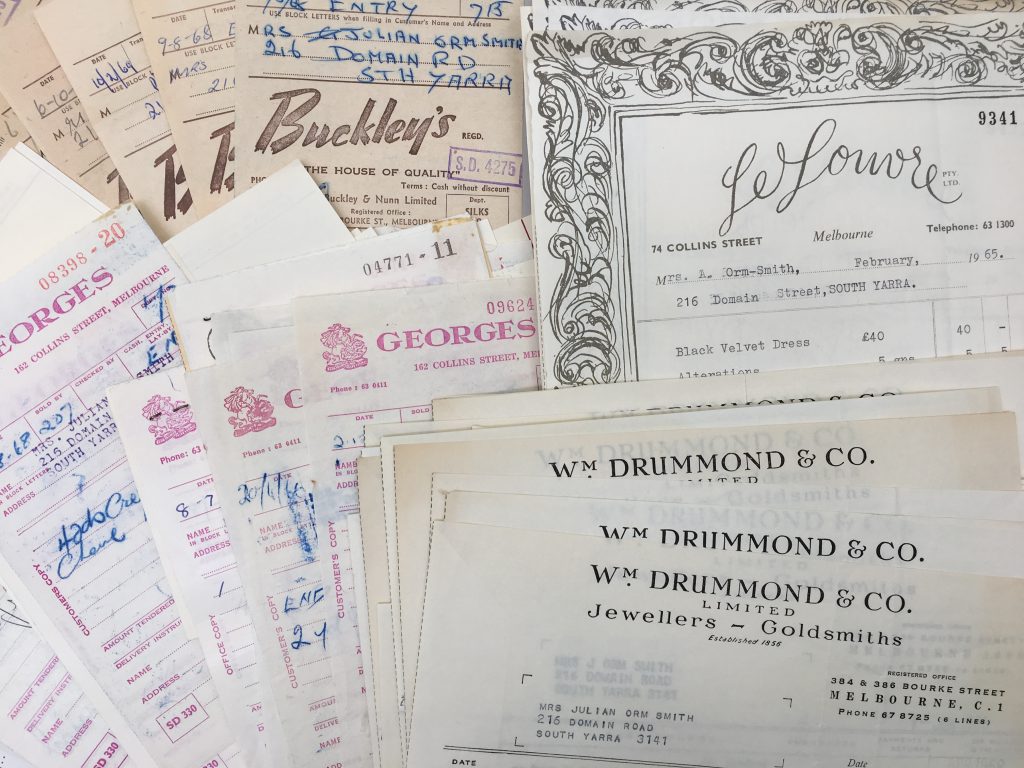
(YMS 16147, Box 20–21)
After the death of her mother in 1945 she became a supportive companion to her father and took on a significant role in the management of the family pastoral properties, a role she maintained throughout her life.
Finished!
Fully rehoused and listed, the collection is contained within 64 manuscript boxes, 15 photograph albums, 2 stamp albums, 19 flat boxes, 17 custom boxes and 23 polypropylene film enclosures. With storage at a premium, the final sequencing of the boxes also ensured efficient storage and accessibility for years to come.

This was an incredibly rewarding project, from both a preservation and a social history perspective. We discovered that Marion Page was a fascinating woman, not least because of her archiving techniques, but because of where she came from and who she became, growing up at a time when women faced some serious social and cultural constraints. She was a successful businesswoman in her own right, a generous philanthropist and a considerate friend to many.
And now that it’s done, this incredible woman’s archive joins the State Collection, enriching the diversity of stories held by the Library and deepening our understanding of women’s contributions to history.

Digitisation of the 16mm film was a success! We were granted only a short glimpse of Marion in motion (at the end of the clip), but it was a special moment nonetheless. We leave you with a small taste of the world through Marion’s eyes.
See more of the digitised collection
Marion Page’s service record was recently digitised by the National Archives of Australia. To view this substantial record, visit: http://RecordSearch.naa.gov.au/scripts/AutoSearch.asp?Number=5242382&O=I
This post was written by Kate Holloway and Leah Williams from Preservation


Marion was very active with the Royal Melbourne Hospital.
She was also a keen supporter of the Sir Robert Menzies Lecture.
She maintained her close friendship with Heather Henderson (Menzies).
A lady with strong opinions.
Thank you for your comments Alan. The blog has now been updated with a link to the catalogue record. The Finding Aid contains information regarding the subjects you mention and will soon be available online. We did suspect that Marion was quite a formidable character, while also revealing a generosity of spirit and a considerate nature. Her relationship with Heather Henderson was clearly very important to her as evidenced by their life-long correspondence.
We are so blessed to have such talented people and to live in an era where past history can be preserved for future generations. Congratulations on all your hard work. I find it all fascinating.
We are so glad you enjoyed reading about the work we do in Preservation at the Library. We are fortunate to have the opportunity to delve into fascinating collections such as the Marion Page Archive while also preserving the stories that make up our shared history.
Thank you for your work in preserving this collection. I found this a fascinating read. Marion Page’s father, Sir Clive McPherson was in partnership with my Grandfather, John Archibald Thom, Yarrawonga, from 1913 to 1933. There is a plaque erected on the site of their office which was a joint project of Yarrawonga Federation Committee and the Moira Shire in Marach 2001. I attended the unveiling of this plaque along with my cousin, and also Marion Page.